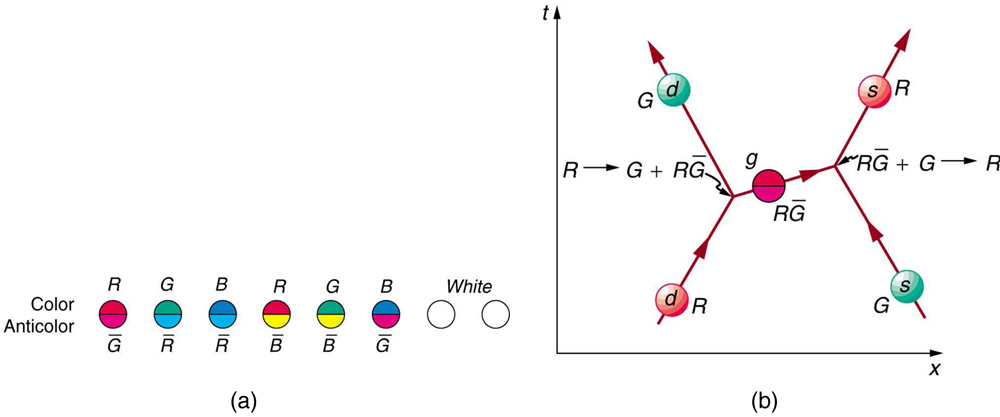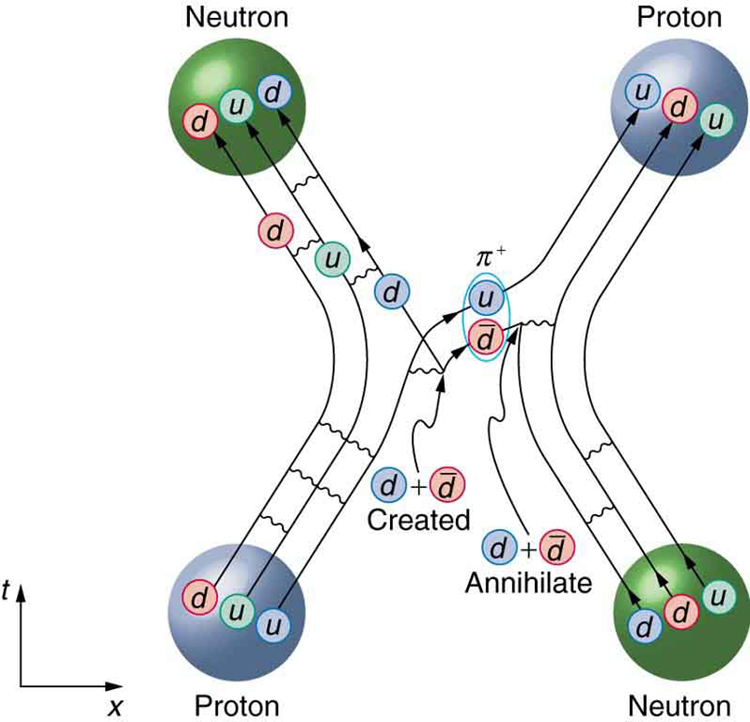| << Chapter < Page | Chapter >> Page > |
Although the weak nuclear force is very short ranged ( , as indicated in [link] ), its effects on atomic levels can be measured given the extreme precision of modern techniques. Since electrons spend some time in the nucleus, their energies are affected, and spectra can even indicate new aspects of the weak force, such as the possibility of other carrier particles. So systems many orders of magnitude larger than the range of the weak force supply evidence of electroweak unification in addition to evidence found at the particle scale.
Gluons ( ) are the proposed carrier particles for the strong nuclear force, although they are not directly observed. Like quarks, gluons may be confined to systems having a total color of white. Less is known about gluons than the fact that they are the carriers of the weak and certainly of the electromagnetic force. QCD theory calls for eight gluons, all massless and all spin 1. Six of the gluons carry a color and an anticolor, while two do not carry color, as illustrated in [link] (a). There is indirect evidence of the existence of gluons in nucleons. When high-energy electrons are scattered from nucleons and evidence of quarks is seen, the momenta of the quarks are smaller than they would be if there were no gluons. That means that the gluons carrying force between quarks also carry some momentum, inferred by the already indirect quark momentum measurements. At any rate, the gluons carry color charge and can change the colors of quarks when exchanged, as seen in [link] (b). In the figure, a red down quark interacts with a green strange quark by sending it a gluon. That gluon carries red away from the down quark and leaves it green, because it is an (red-antigreen) gluon. (Taking antigreen away leaves you green.) Its antigreenness kills the green in the strange quark, and its redness turns the quark red.

The strong force is complicated, since observable particles that feel the strong force (hadrons) contain multiple quarks. [link] shows the quark and gluon details of pion exchange between a proton and a neutron as illustrated earlier in [link] and [link] . The quarks within the proton and neutron move along together exchanging gluons, until the proton and neutron get close together. As the quark leaves the proton, a gluon creates a pair of virtual particles, a quark and a antiquark. The quark stays behind and the proton turns into a neutron, while the and move together as a ( [link] confirms the composition for the .) The annihilates a quark in the neutron, the joins the neutron, and the neutron becomes a proton. A pion is exchanged and a force is transmitted.


Notification Switch
Would you like to follow the 'College physics' conversation and receive update notifications?